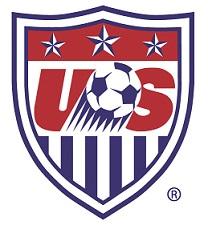

The U.S. Men’s National Team (MNT) has played in seven consecutive FIFA World Cups and advanced to the quarterfinals at the 2002 event. U.S. Soccer is a world leader in women’s soccer at every level, and the U.S. Women’s National Team (WNT) has won two FIFA Women’s World Cups and four Olympic Gold Medals – an accomplishment that no other country on the men’s and women’s side has reached in Olympic competition. The United States has also hosted three World Cups. Major League Soccer continues to grow in popularity and prestige with 20 teams throughout North America.
Sports Destination Management: It’s fair to say that right now, interest in soccer in the United States has never been higher. That means a lot of people attending national team matches on home soil. How many does US Soccer sanction?

SDM: The Women’s World Cup Victory Tour is going on right now. Is the attendance good?
Buethe: Yes, we’re seeing fantastic crowds. Obviously, interest in the national team is going to be high right now, but it’s good to see. The fans want to celebrate with the team. In fact, we just announced a new tour stop in Hawaii.
SDM: How does US Soccer determine its host cities? Obviously venue quality is a big factor, but after that, are you looking at the city, its population, infrastructure and so forth?
Buethe: We look at all those factors. The normal process for us is first to determine the match date and the opponent. After that, we start reviewing a list of possible venues. There is a wide range of things going into the decision, including the size of the venue, the surface it has, if we have ever played there before, the weather that time of year, the travel considerations, if anything else is going on in the city at that time – there is a lot to take into consideration. We talk to possible venues throughout the year. If people want to host, they can talk to our event staff.
SDM: Are you seeing more stadiums purpose-built for soccer?

SDM: What else is US Soccer doing to engage the fans?
Buethe: Something we want to do is let people know it’s not just about the match. We want to improve the fan experience by providing entertainment beyond the 90 minutes of game time. We have these parties the night before in what we call Fan HQ – a place the spectators can get together and have a good time. We also want them to have a tailgate experience the day of the game. It’s all about bringing the community together.
